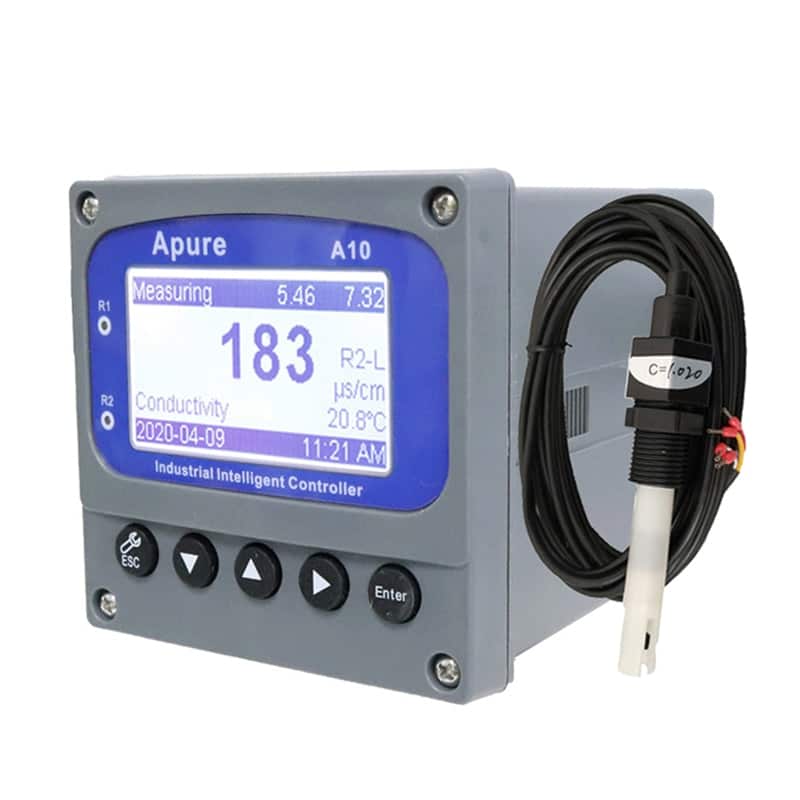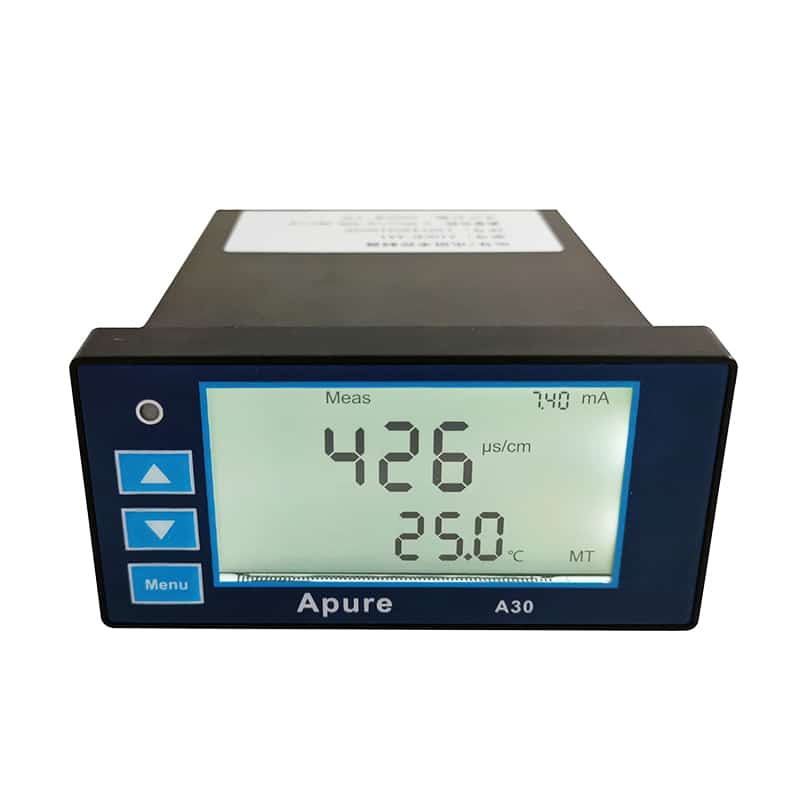Water quality is a critical aspect of health, industrial processes, and environmental conservation. One key parameter in assessing water quality is Total Dissolved Solids (TDS). But what exactly are TDS, and why do they matter?
What’s TDS in Water?
TDS stands for Total Dissolved Solids and represents the total amount of all solids dissolved in water.TDS includes inorganic salts (such as calcium, magnesium, potassium, sodium, carbonates, bicarbonates, chlorides, and sulfates) as well as small amounts of organic matter.TDS is usually measured in milligrams per liter (mg/L) or parts per million (ppm).
Types of TDS
| Type | Specific Components | Source |
|---|---|---|
| Inorganic Salts | CaCO₃, NaHCO₃ | Groundwater passing through mineral-rich soil and rock |
| NaCl, CaCl₂ | Groundwater, industrial wastewater, agricultural runoff | |
| Na₂SO₄, MgSO₄ | Groundwater, industrial wastewater, agricultural runoff | |
| NaNO₃, KNO₃ | Agricultural runoff, industrial wastewater | |
| Na₃PO₄, K₃PO₄ | Agricultural runoff, domestic sewage | |
| Organic Substances | Humic Substances | Natural water bodies, organic matter decomposition |
| Acetic Acid (CH₃COOH), Oxalic Acid (C₂H₂O₄) | Industrial wastewater, domestic sewage | |
| Sugars and Amino Acids | Industrial wastewater, domestic sewage | |
| Pesticides, Herbicides, Industrial Chemicals | Agricultural runoff, industrial wastewater | |
| Other Impurities | Lead (Pb), Mercury (Hg), Cadmium (Cd), Chromium (Cr) | Industrial pollution |
| Magnesium (Mg), Calcium (Ca), Potassium (K), Sodium (Na) | Natural minerals, groundwater | |
| Suspended Particles | Industrial wastewater, domestic sewage | |
| Manganese (Mn), Iron (Fe), Zinc (Zn) | Natural water bodies, industrial wastewater |
Why Is The TDS of Water Important?
- Health Impact
Drinking water quality: High TDS levels may contain harmful substances such as heavy metals (lead, mercury), organic pollutants (pesticides, herbicides), and other chemicals that pose potential health risks.
Taste and odor: High TDS levels can affect the taste of drinking water, making it bitter or metallic, which impacts the drinking experience. - Impact on Equipment and Pipelines
Scaling issues: High TDS levels can cause mineral deposits to form inside pipes and equipment, leading to scale buildup that affects efficiency and lifespan. This is common in water heaters, boilers, and cooling towers.
Corrosion issues: Certain dissolved solids like chlorides and sulfates can accelerate the corrosion of pipes and equipment, increasing maintenance costs and causing equipment failures. - Industrial Applications
Manufacturing processes: Many industrial processes, such as food processing, pharmaceuticals, and electronics manufacturing, require high water quality. High TDS levels can affect product quality and production efficiency.
Cooling and heating systems: High TDS water can impact the efficiency of cooling and heating systems, increasing energy consumption and maintenance costs. - Agriculture and Irrigation
Crop growth: High TDS levels in irrigation water can lead to soil salinization, affecting crop growth and yield. Certain crops are very sensitive to TDS levels and require specific ranges.
Soil health: Long-term use of high TDS water for irrigation can alter the chemical properties of soil, leading to soil structure degradation and reduced fertility. - Environmental and Ecosystem Impact
Aquatic ecosystems: High TDS levels can affect the habitat of aquatic organisms, inhibiting the growth of fish and other aquatic life, and potentially causing death.
Environmental pollution: Discharging high TDS water into natural environments can affect surrounding ecosystems and water quality, leading to environmental pollution. - Regulations and Standards
Drinking water standards: Many countries and regions have strict standards for TDS levels in drinking water. For instance, the World Health Organization (WHO) recommends that TDS in drinking water should be below 600 mg/L, while the US Environmental Protection Agency (EPA) sets a secondary standard of 500 mg/L.
How to Measure TDS in Water?
Measuring TDS in water is usually done with a conductivity meter because dissolved solids in water affect the conductivity of the water.
Conductivity Method
- Basic Principle: TDS measuring instruments indirectly estimate TDS values by measuring the conductivity of water. Because the presence of dissolved solids (such as salts) increases the conductivity of water, there is a certain correlation between conductivity and TDS.
- Conversion Factor: Conductivity (in µS/cm) is usually converted to TDS values (in mg/L or ppm) using a conversion factor (usually between 0.5 and 0.7). For example, water with a conductivity of 1000 µS/cm.

Types of Sensor
Conductivity Sensor
- Principle: Extrapolates the TDS value by measuring the conductivity of the water.
- Characteristics: Conductivity sensor requires periodic calibration to ensure accuracy. Apure A30 digital TDS EC meter is a better choice.

Optical Sensors
- Principle: Indirect measurement of the concentration of dissolved substances in water through refraction or absorption of light.
- Application: Usually used to measure the concentration of specific dissolved substances, such as turbidity, chemical oxygen demand (COD).
How to Remove TDS?
TDS (Total Dissolved Solids) refers to the total amount of dissolved solids in water. Common methods to remove TDS include:
Reverse Osmosis (RO) Filtration:
- Reverse osmosis filtration is a highly effective method for removing TDS by using a semipermeable membrane to separate dissolved solids from the water, resulting in nearly pure water.
Distillation:
- Distillation involves heating the water to evaporate it and then condensing it back into liquid form, effectively removing dissolved solids. This method can remove almost all TDS.
Deionization (DI):
- The deionization process uses resins to adsorb ions from the water, thereby reducing TDS levels. This method is commonly used in laboratory or industrial applications.
Electrodialysis:
- Electrodialysis uses an electric field to separate charged dissolved solids from water, suitable for treating larger volumes of water.
Ion Exchange:
- Ion exchange involves swapping sodium ions in the resin with calcium and magnesium ions in the water, reducing water hardness and partially lowering TDS.
Summary
Managing Total Dissolved Solids in water is not just about maintaining water quality, but also about ensuring the health and safety of those who rely on that water. Whether it’s for drinking, cooking, or industrial use, understanding TDS levels and knowing how to control them can make a significant difference.
Apure’s innovative solutions are designed to solve the most pressing water quality challenges, from detecting total dissolved solids (TDS) to monitoring pH and other critical parameters. What sets Apure apart is its relentless pursuit of accuracy and user-friendly design.
